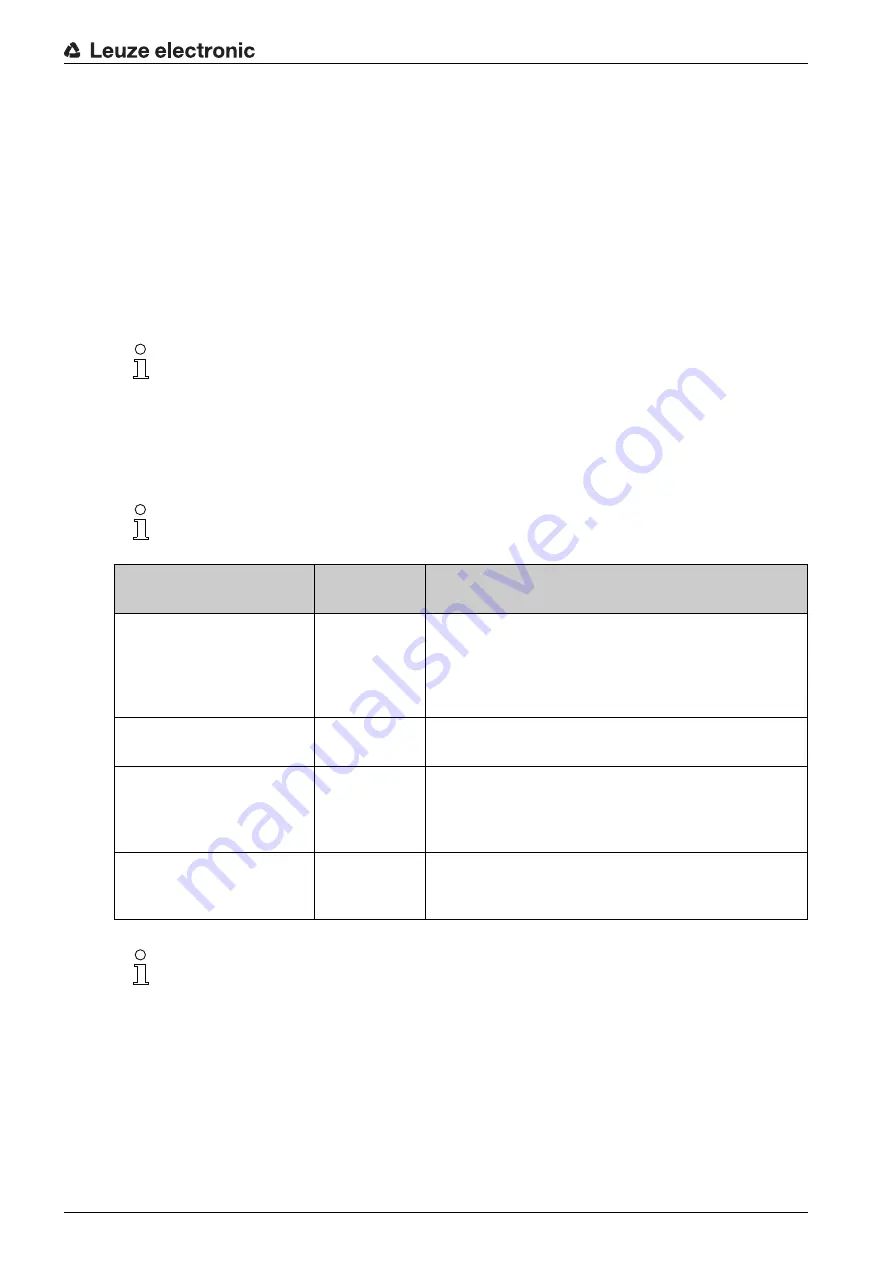
Functions
Leuze electronic
CSL 710
29
Example configurations for the assignment of previously defined height areas to switching outputs Q1 to
Q4:
• see chapter 10.1 "Example configuration - Mapping of beams 1 … 32 to output pin 2"
• see chapter 10.2 "Example configuration – Teach height area"
4.7
Switching outputs
4.7.1 Light/dark switching
The behavior of switching outputs Q1 to Q4 (or Q1 to Q2) can be configured with respect to light/dark
switching. The setting ex works is “light switching”, i.e., the outputs are activated if the light paths are free
and become inactive if an object is detected in the measurement field.
4.7.2 Time functions
Each of the individual switching outputs can be assigned one of the time functions described in the
following table.
4.8
Interference suppression (filter depth)
To suppress any faulty measurement values that may occur due to interference (ambient light, electromag
-
netic fields, …), the filter depth of the light curtain can be increased.
“Filter depth” means that an interrupted/free beam is not included in the further data evaluation until the
same beam status is recorded for the set number of measurement cycles.
Filter depth “1” = the beam states of each measurement cycle are output.
Filter depth “3” = only those beam states that were stable over three measurement cycles are output.
The output behavior can be changed to “dark switching” via the interface (see chapter 9), via the
receiver control panel and via the
Sensor Studio
configuration software (see chapter 11).
The accuracy of the switching delay is dependent on the measurement frequency. Observe this
especially in cascaded operation.
Time function
Selectable
Duration
Description
Start-up delay
with re-trigger
0 … 65000 ms Time that the sensor delays the start-up process after
detecting an object.
By means of a start-up delay, it is possible to suppress,
e.g., upward-protruding packaging remnants (stretch
wrap, etc.) during pallet height monitoring.
Switch-off delay
with re-trigger
0 … 65000 ms Time that the sensor delays the switching back of the
output if the object leaves the detection range.
Pulse stretching
0 … 65000 ms Minimum time that the state of the output is retained
independent of what the sensor detects during this time.
Pulse stretching is necessary for, e.g., hole recognition if
the PLC cycle time does not register short pulses.
Pulse suppression
with re-trigger
0 … 65000 ms Minimum time that a measurement signal must be pres
-
ent in order for the output to switch. Short interference
pulses are thereby suppressed.
The various time functions can be configured via the interface (see chapter 9) or via the
Sensor Studio
configuration software (see chapter 11).
















































